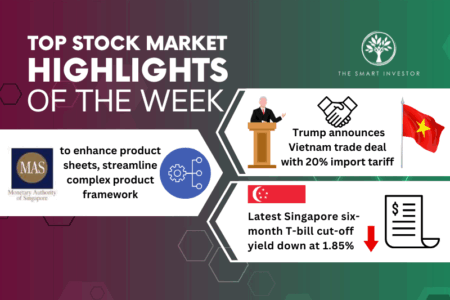Risk management is essential when building a stock portfolio.
But it is impossible to remove risk completely. Instead, we should find ways to reduce risk in our investment portfolio, while maintaining a good chance for high returns.
With that in mind, here is a simple framework for picking low-risk stocks.
How to find low-risk businesses?
A low-risk business should have a strong balance sheet and an ability to consistently generate cash. Ideally, I look for companies with six qualities that should indicate it has a resilient business.
1. A manageable debt load and low-interest expenses
The company should be able to easily service its interest expense and to pay back its debts when they’re due.
The company should have both a low-interest coverage ratio (how easily it can pay back its interest expenses using profits or free cash flow) and a low debt-to-equity ratio.
2. Consistent free cash flow generation
Cash is the lifeblood of a company. It is what the company needs to pay its creditors and suppliers.
A company that is able to generate cash after paying off all its expenses and capital requirements (free cash flow to equity) is then able to reward shareholders through dividends, share buybacks, or reinvesting in the business.
3. Predictable and recurring sales
In order to generate cash consistently, a company needs recurring sales.
A low-risk business should have recurring and fairly predictable revenue. This can come in the form of repetitive customer behaviour or long-term contracts.
4. Low customer concentration
The business should also have a varied pool of customers. A high customer concentration might cause wild fluctuations in sales and profits.
5. A diversified business
Similarly, the business should ideally not rely on a single revenue source. A business that has multiple revenue streams is more resistant to technological changes disrupting a single core focus.
6. A long track record
Finally, a low-risk business should have a reasonably long track record of all the above qualities.
The track record should ideally span years, if not, decades. Businesses that have such an admirable track record demonstrate resilience and management’s adaptability to technological disruptions.
Mind that valuation
Beyond the factors above, we should also consider the risk of valuation-compression.
A valuation compression occurs when a company’s market value declines permanently despite sustained earnings growth.
That usually happens because the starting valuation is too high. If the purchase price is too steep, a good business may still end up becoming a bad investment.
The most common metrics that are used to value a stock are the earnings, cash flow, and book value.
Another metric that I like to use is the enterprise value to EBITDA (earnings before interest, tax, depreciation, and amortisation). The metric is also known conveniently as EV-to-EBITDA.
The enterprise value, or EV, strips out the company’s net cash from its market cap.
Companies whose cash make up a large proportion of their market caps are prime acquisition targets. In addition, the net cash balance could also act as a support for which the company’s market cap will likely not fall under.
I also look for companies whose earnings are likely to grow faster or longer than the market expects. Admittedly, this approach requires a reasonable amount of judgment.
But stocks that eventually exhibit such sustained growth are unlikely to see a compression in their valuation.
Get Smart: Don’t fear risk
If you’ve been avoiding stocks because of the fear of the risk of loss, don’t.
Warren Buffett says that “risk comes from not knowing what you are doing.”
If we pick stocks wisely, the risk of permanent loss becomes small. On top of investing in stocks that exhibit low-risk qualities, investors should also consider diversifying their portfolio.
Diversification reduces the risk that a single mistake or an unforeseen circumstance will be detrimental to our overall portfolio.
If you’d like to learn more tips on how to be a smarter investor, click HERE to subscribe to The Smart Investor’s Free investing newsletter, Get Smart! We’ll show you how you can build a better financial future for you and your family.
None of the information in this article can be constituted as financial, investment, or other professional advice. It is only intended to provide education. Speak with a professional before making important decisions about your money, your professional life, or even your personal life.
Note: An earlier version of this article was published at The Good Investors, a personal blog run by our friends.




